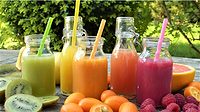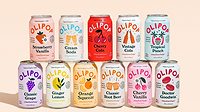Nielsen identifies consumer health concerns
ABA, brand owners proactive in offering solutions

Aside from the Valentine’s Day candy and treats on the store shelves, the first quarter of a new year tends to be filled with diet- and exercise-related products to appeal to those consumers who resolved to lose weight or eat healthier in the new year.
For myself, my resolution to lose weight will likely come around mid- to late summer when I get the OK from the doctor to lose my baby weight. However, many other consumers have expressed the need to address their health and weight issues, which could become an opportunity for food and beverage manufacturers.
According to Nielsen’s Global Health & Wellness Survey, nearly half (49 percent) of the global respondents consider themselves overweight. Citing the 2013 Global Burden of Disease Study, the New York-based market research firm says that an estimated 2.1 billion people, or nearly 30 percent of the global population, are overweight or obese. However, Nielsen’s study shows that consumers are willing to take charge of their health and are willing to pay a premium to do so.
Because of the vast number of consumers who are concerned about obesity and other health-related issues, Nielsen suggests that brand owners should better align their offerings with these consumer need states in order to see growth benefits.
“There is a tremendous opportunity for food manufacturers and retailers to lead a healthy movement by providing the products and services that consumers want and need,” said Susan Dunn, executive vice president of global professional services with Nielsen, in a statement. “While diet fads come and go over time, innovative, back-to-basics foods that taste good, are easy to prepare, and provide healthful benefits will have staying power. The first step is knowing where to put your product development efforts.”
In the beverage space, we already are seeing brands and associations addressing this trend. This month’s Special Report article on health and wellness (page 18) details how leading advocacy groups including the American Beverage Association and brand owners such as The Coca-Cola Co., PepsiCo Inc. and Dr Pepper Snapple Group (DPS) have pledged to reduce the number of calories that each American consumes on a national level by
20 percent by 2025.
Beyond this pledge from non-alcohol industry leaders, the beverage marketplace is seeing more low-calorie brands find a home with consumers as their products expand distribution. In this month’s cover story on Bai Brands LLC (page 24), Chief Executive Officer Ben Weiss details how the company’s national distribution agreement with DPS has allowed the enhanced-water brand to share its Bai5 and newest innovation, Bai Bubbles, with a broader audience that was looking for a healthy beverage solution.
As some consumers search for solutions to their health and wellness needs, it’s great to see so many in the beverage space being proactive in delivering products that address them.
Looking for a reprint of this article?
From high-res PDFs to custom plaques, order your copy today!







